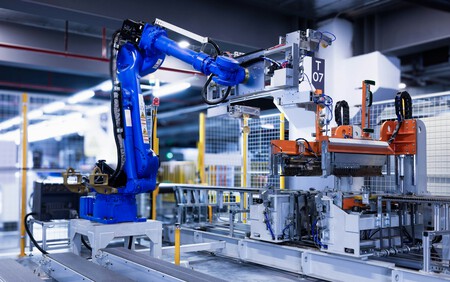For years, looking at the label of any device, garment or charger has been almost a formality. The answer used to be the same: “Made in China“. That phrase became silent proof that the Asian giant had managed to establish itself as the factory of the world. From American brand mobile phones to small components of European appliances, much of what we use every day has come from Chinese production lines. But that reality is beginning to change. China’s industrial leadership is no longer sustained solely by abundant labor and low costs, and the model that dominated the last decades needs to be transformed.
The shift is not only economic, but also social. Fewer and fewer young Chinese want to work in factories, a phenomenon that in the United States follows similar patterns: physical jobs, long hours and little career prospects. In both cases, the industry is no longer synonymous with progress for many and is perceived more as a destiny from which one tries to escape. Even so, both China and the United States consider that manufacturing remains strategic, either to maintain global influence or to reduce dependence on foreign countries. Everything indicates that none of them are trying to recover the model of the past, but rather to build a new one based on automation and artificial intelligence.
Robots and factories to avoid losing “Made in China”
When Chinese Vice Minister of Industry Zhang Yunming said that adopting artificial intelligence is a necessary task and not optional, he was not just speaking in technological terms. He was referring to protecting one of the country’s great assets: its manufacturing industry, which represents around 25% of the national economywell above the world average. China remains the world’s largest producer, but it can no longer rely solely on volume or labor. The challenge now is to maintain that leadership by manufacturing with fewer people and more artificial intelligence.
In this context, China is responding decisively. The pace at which it is deploying industrial robots is unmatched. Last year alone it installed 295,000 units, nearly nine times more than the United States and more than the rest of the world combined, according to the International Federation of Robotics. In some facilities there is already talk of “dark factories”, operations so automated that the plants can operate with minimal human intervention. The Wall Street Journal mentions the case of Baosteel, one of the largest steel companies in the country, where workers only intervene every half hour, when before they did so every three minutes.
Automation no longer consists only of mechanical arms that repeat movements, but of connected plants, capable of making decisions. The aforementioned newspaper points out how Midea uses an AI system that coordinates robots, sensors and virtual agents to detect failures, assign tasks and adjust processes without human intervention. In the textile industry, Bosideng uses AI models developed with Zhejiang University to conceptualize and design garments, reduce development times and cut costs. This type of solutions not only speeds up production, it also generates a competitive advantage over Western manufacturers that implement changes more slowly.

Where China’s industrial ambition is also clearly seen is in the ports. In Tianjin, a fleet of autonomous trucks moves containers without visible human presence, while artificial intelligence optimizes variables such as ship arrival times and crane capacity. The system, called OptVerse AI Solver, has compressed planning tasks that previously took 24 hours to about ten minutes. PortGPT, a system developed together with Huawei to analyze images and monitor security operations, has also been deployed.
The American discourse is based on the idea of sovereignty: manufacturing more within the country to depend less on the outside. The Trump administration has proposed this strategy through tariffs on China, Vietnam and other Asian economies, with the aim of attract factories and rebuild supply chains. Commerce Secretary Howard Lutnick maintains that automation is not incompatible with employment, but can lead to better-paying technical professions. In an interview he stated that “it is time to train people for the jobs of the future, not for those of the past,” and defended that these factories could support families for several generations.
One of the differences between the two models is clearly seen in the ports. While China has deployed autonomous trucks, AI-based planning systems, and tools like PortGPT without significant union opposition, in the United States automation is subject to collective bargaining. The International Longshoremen’s Association and port operators agreed to veto new automated terminals until the end of 2030, also limiting the use of artificial intelligence in administrative tasks. For unions, automation means losing jobs and bargaining power. For China, it is a national strategy.

China wants to continue being the world’s factory, but not exactly the same. It is no longer about cheap labor, but about factories capable of producing more with fewer people and with more artificial intelligence. The United States seeks its own path, with more work conditions and a different rhythmbut with the same objective of not depending on the outside. What is at stake is not just where it is manufactured, but how. And it is possible that, in a few years, the label we find will not only be “Made in China”, but a different form of manufacturing where robots will no longer be accessories, but protagonists.
Images | Homa Appliances | WorldOfSoftware with Gemini 3
In WorldOfSoftware | Nexperia China has been trying to contact the Dutch headquarters for days. The only response has been absolute silence










